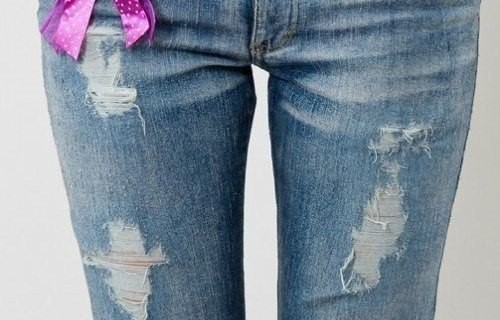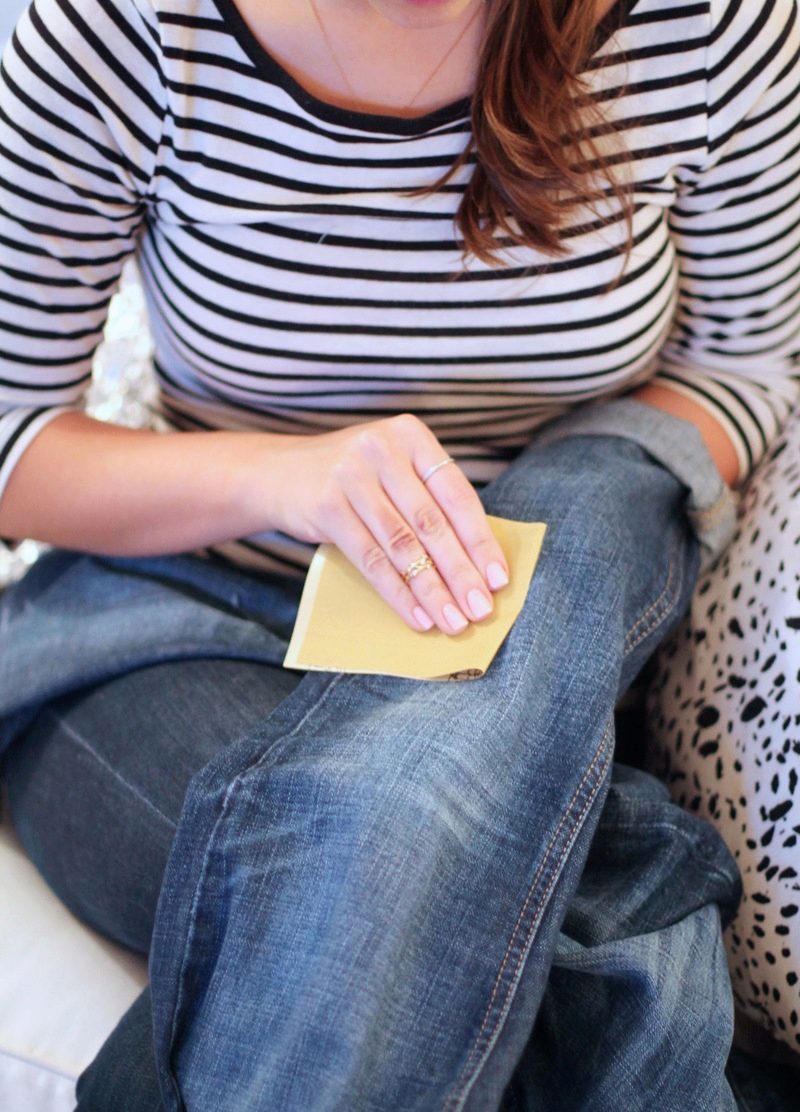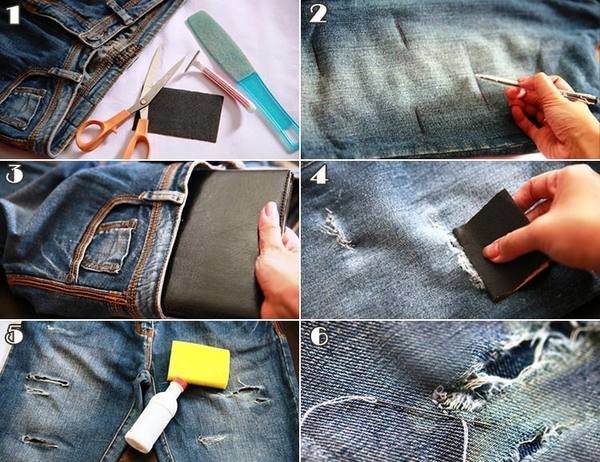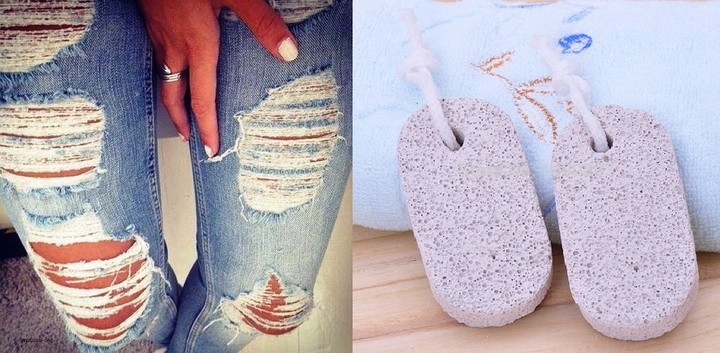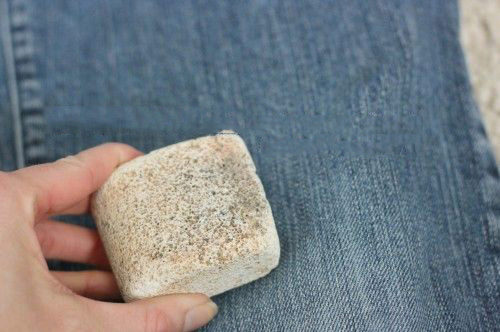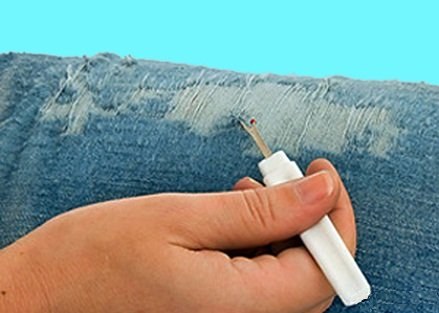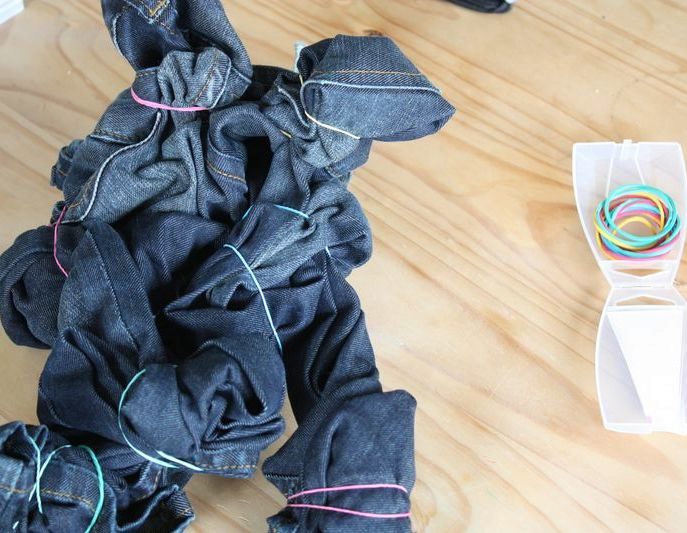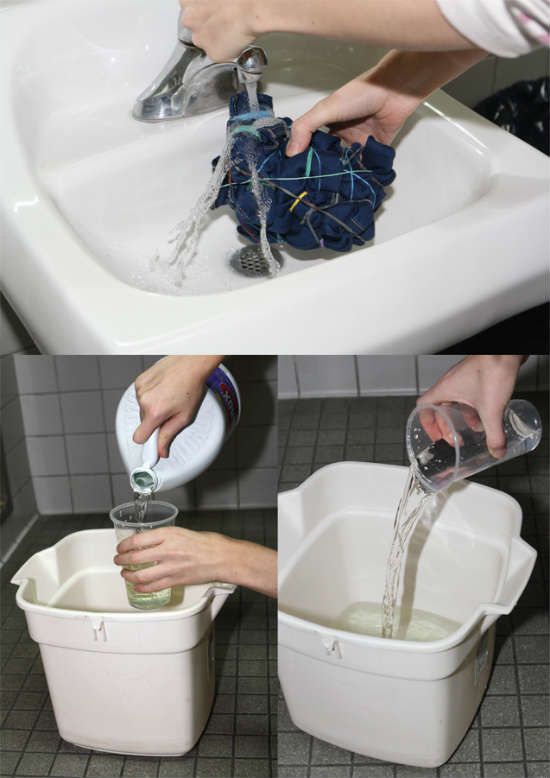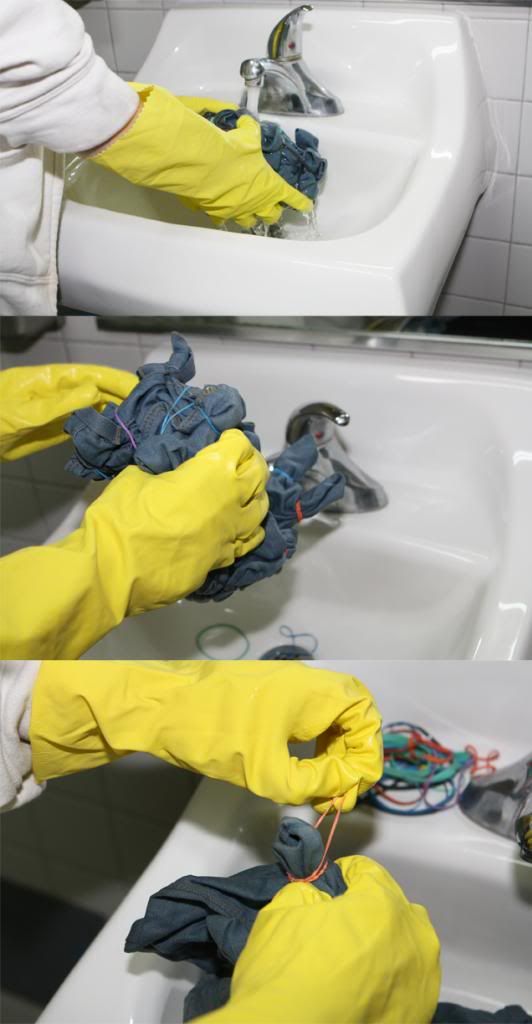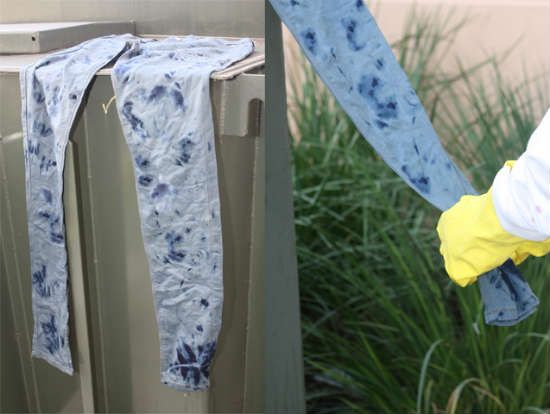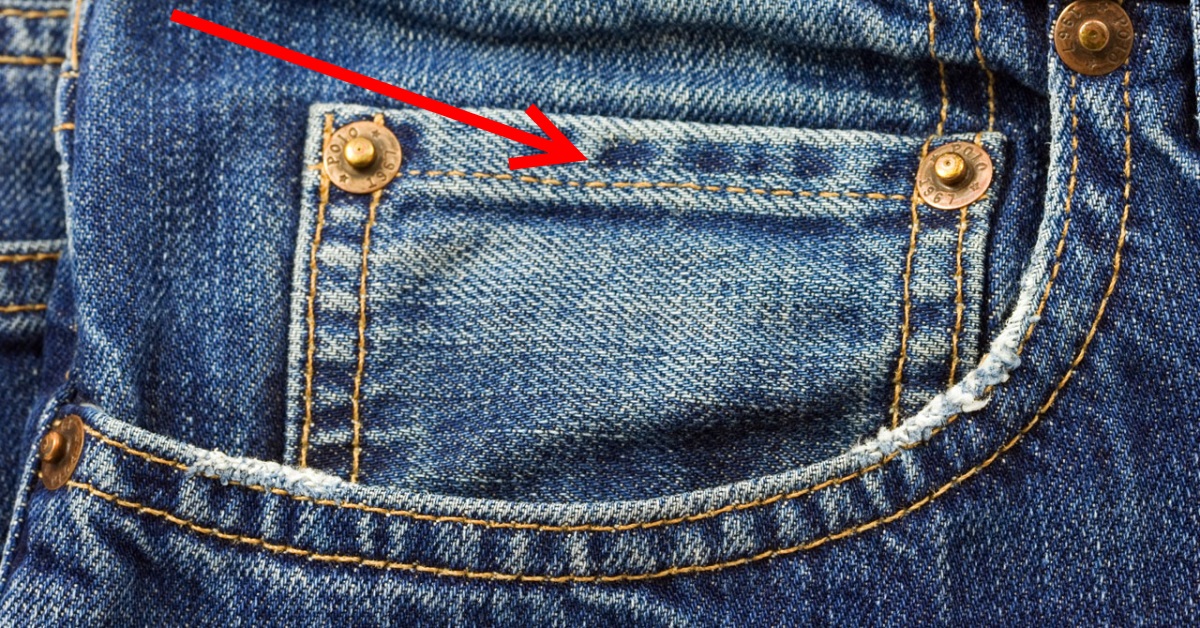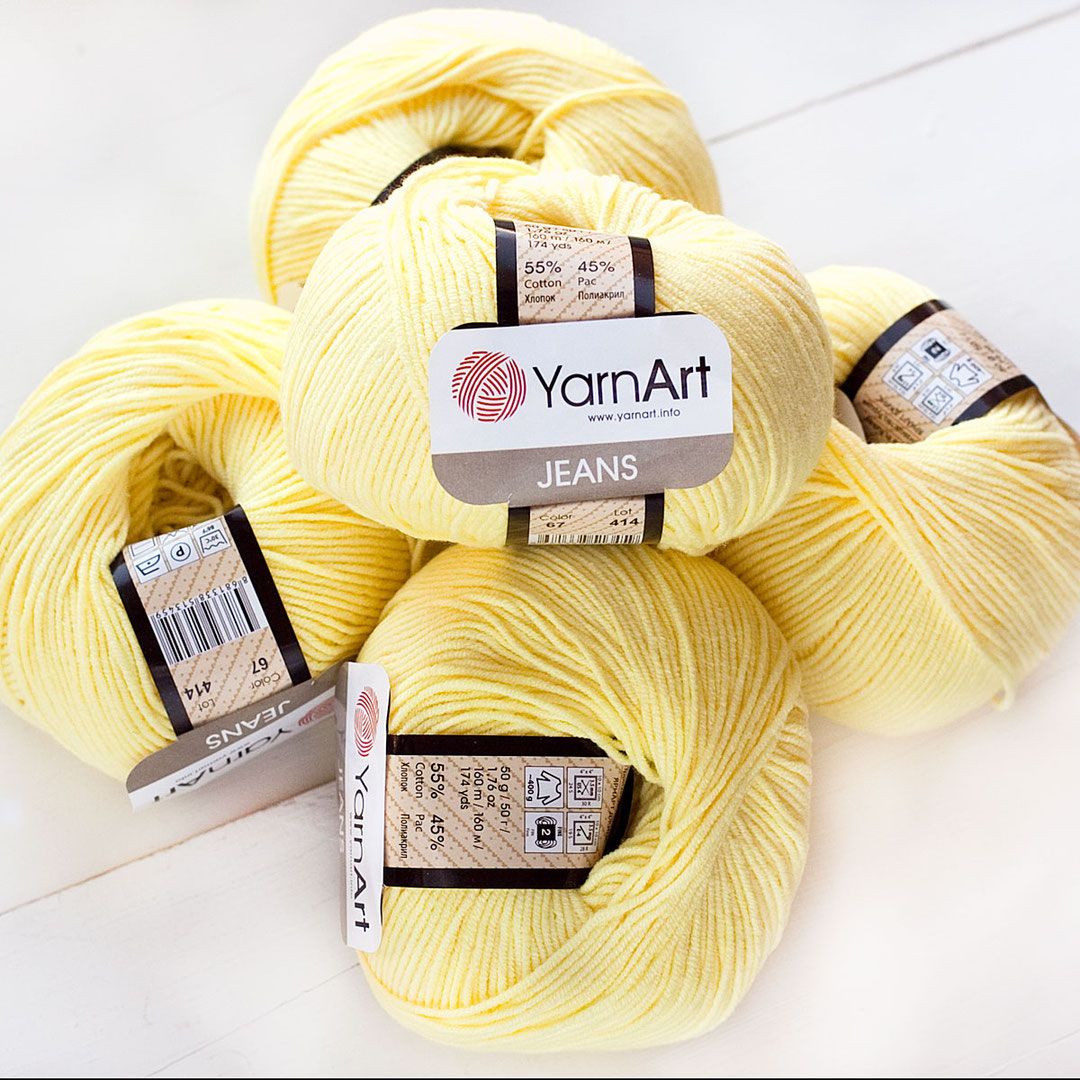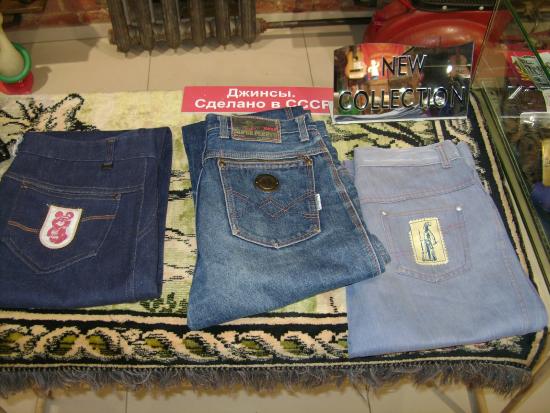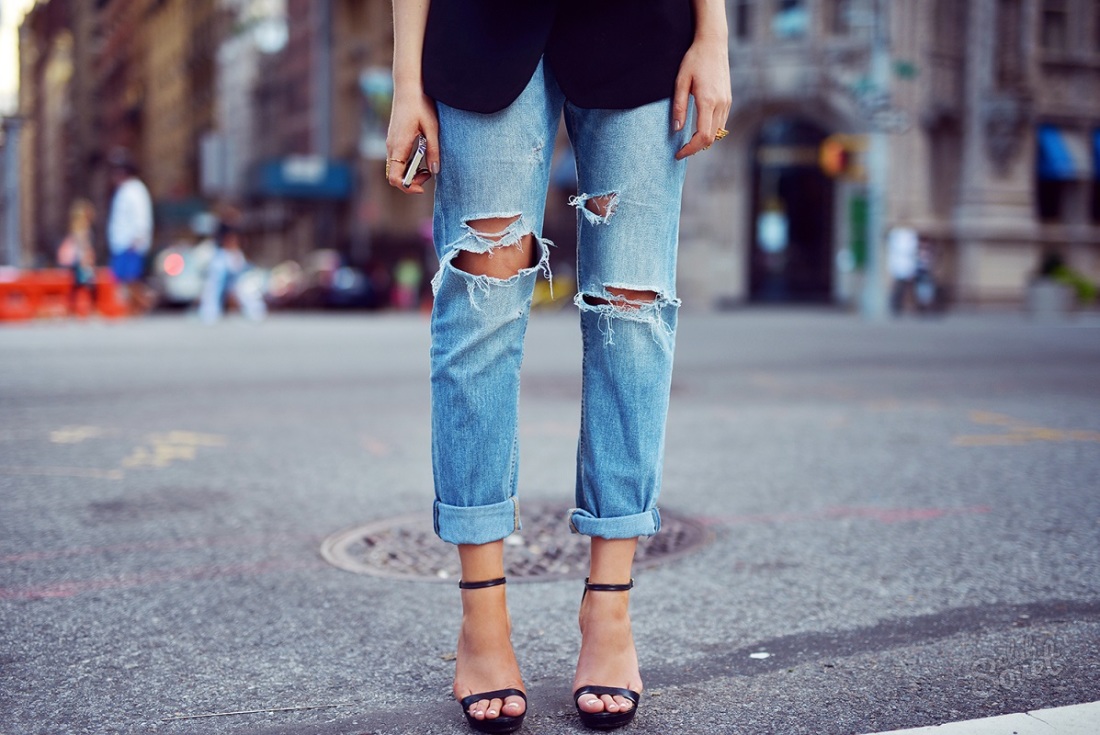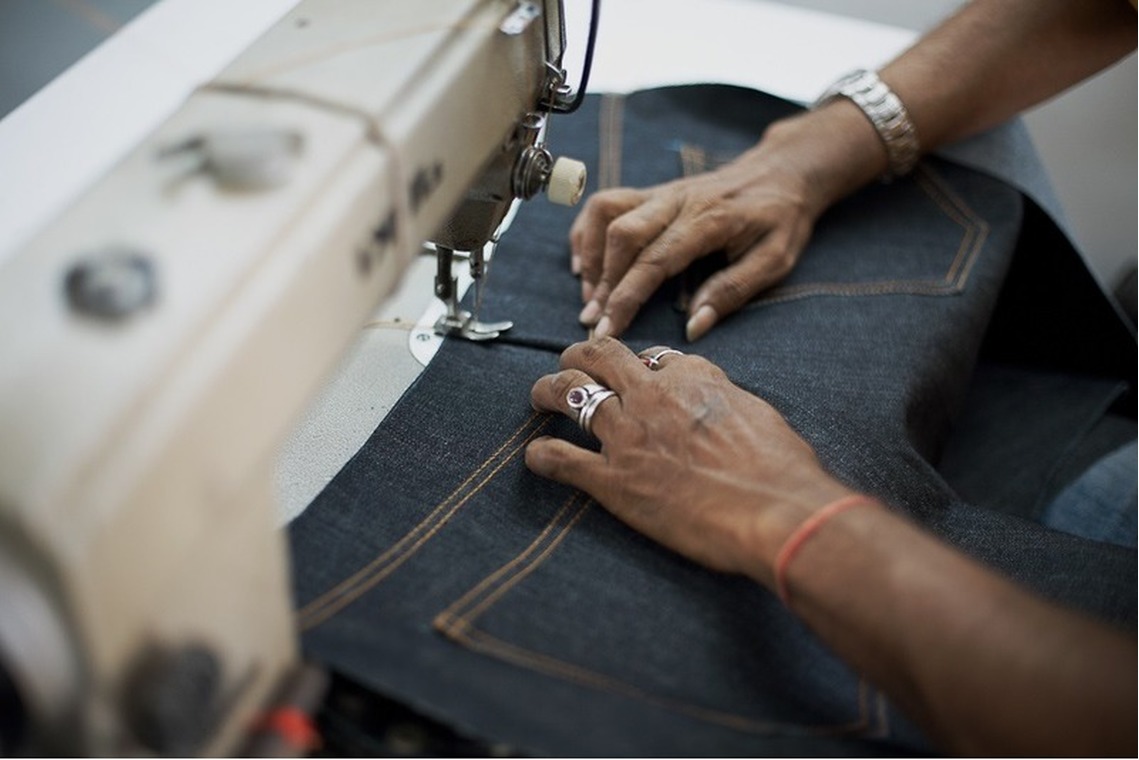Jeans are a versatile wardrobe item. The durability of denim allows you to wear such trousers for many years. But fashion dictates its own rules, and your favorite jeans lose their relevance. Knowing how to make scuffs on jeans will help breathe new life into an old model.
Methods of creating an effect
Conventionally, all methods of how to make scuffs on jeans can be divided into three categories:
- mechanical - exposure of denim fabric to abrasives (sandpaper, pumice, brick);
- chemical - the process of bleaching certain areas of the fabric occurs through exposure to liquids containing chlorine;
- thermal - abrasions are the result of prolonged boiling of trousers with bleaching agents.
With sandpaper
To make the work go faster, prepare the necessary tools in advance:
- fine-grained sandpaper (or grater);
- tweezers;
- a sharp tailor's chalk (or a regular piece of soap).
The algorithm of actions is as follows:
- draw areas of future abrasions on denim trousers. Ideal places are those that wear naturally. Don't limit yourself to just the front part of the trousers. Back pockets with abrasions also look fashionable and impressive;
- Before forming the scuffs, the jeans are thoroughly wetted and wrung out. Then, sandpaper (or a grater) should be used along the marked lines. A pronounced effect of torn and scuffed jeans can be achieved if a small cut is made in the center of each mark;
- we treat scuffs on jeans. Using tweezers, we take out the transverse threads in each scuff. It is important that the longitudinal threads remain intact;
- The final stage is washing in a washing machine.

With pumice
You can achieve more accurate, small abrasions on jeans by using pumice instead of sandpaper. The algorithm of actions is also not much different from the sequence of manipulations when using sandpaper.
The areas of future abrasions are marked on the denim fabric, after which the trousers are slightly wetted. Then the necessary areas are carefully rubbed with pumice. The abrasions can be given their final appearance by working on them with tweezers or a crochet hook.
Using pumice, you can achieve an absolutely stunning effect of aging jeans. To do this, carefully wipe the entire surface of the denim trousers with pumice. Its delicate structure will only slightly age the fabric. A more pronounced effect can be achieved by using sandpaper, which more thoroughly processes the necessary areas.
When using double processing with pumice and sandpaper, do not overdo it. Otherwise, without calculating your strength, you can get not neat abrasions, but through holes.
With a crochet hook or a tailor's ripper
It is unlikely that you will be able to quickly get jeans with a worn effect using the crochet hook or tailor's ripper method. The technique requires significant time investment, patience and perseverance. But if you put in a lot of effort, the result will pleasantly surprise you.
The algorithm of actions is as follows:
- dry denim trousers are measured and the necessary areas for future abrasions are marked;
- carefully hooking the transverse threads, they are pulled out, cutting them along the contour of the previously designated area.
It is the transverse threads that are pulled out and cut. They differ in color from the main tone of the denim fabric, which makes the abrasion look brighter. The main thing is to pick up the first thread. Having done the first step correctly, all other actions will not cause much difficulty.
Whiteness
A well-known household product, bleach, will help you quickly make jeans look worn at home. In this case, the effect of wear is achieved through optical illusion. Bleached areas on a general dark background look worn.
There are several ways to do this. With a brush - for this type of work, you need to prepare brushes (preferably number 3 or 5). If you don't have brushes, a regular foam sponge will do. You will also need a basin, whiteness, and a small piece of thick cardboard.
When working with bleach, do not forget about personal protective equipment (rubber gloves).
Algorithm of actions:
- dilute bleach in water (one to one ratio);
- Place a piece of cardboard under the areas of future abrasions that have been marked in advance;
- Apply diluted bleach to the desired area using a brush or sponge;
- according to the bleach manufacturer's instructions, leave the liquid on the fabric for the required time;
- rinse the jeans in warm water (preferably several times);
- Dry your trousers naturally.
Bleaching denim using the "lump" method. Using this method helps not only to lighten jeans in the necessary places, but also to create a very fashionable print over the entire surface of the trousers.
The lump method is ideal for the lazy. Nothing is planned in advance.
The work is carried out as follows:
- tie men's jeans into a knot. Tighten them with rubber bands in random order;
- wet the resulting denim knot with water;
- place the "lump" in a solution of water and bleach (ratio 1:1);
- after a certain amount of time (see the label on the bottle of bleach), remove the rubber bands and untie the knot;
- Rinse the jeans under running water and dry.
Which models are not suitable?
Before you begin the exciting process of creating scuffs, you need to remember which jeans should not be altered:
- trousers made of very thin stretch denim (fading will make it look sloppy and shapeless);
- denim trousers that are wide along the entire length, shapeless, unfashionable jeans (fading will not make such clothes fashionable and relevant).
The following recommendations will help you achieve the expected result:
- if you don't feel confident enough in your skills, before you start altering old jeans, it's worth practicing on a separate, unnecessary piece of fabric. A great solution is to practice your hand on scuffs on old jeans bought in a second-hand store;
- Never distress jeans in the seam area. Otherwise, there is a high risk that distressed jeans will fall apart at the most inopportune moment;
- special fabric paints will help you to be creative when using bleach. They are used to treat already bleached areas, creating a fashionable, original print on the surface of jeans;
- scuffs made in a vertical position will help to visually lengthen the legs;
- To make worn jeans last as long as possible, in places where the fabric has been treated, the reverse side is additionally reinforced with interlining or other soft fabric.
Neat abrasions on jeans are not only a good way to disguise existing fabric defects, but also to give old jeans a new, rebellious, fashionable, slightly sloppy look.
Video
https://youtu.be/rewSOIhAUSY


